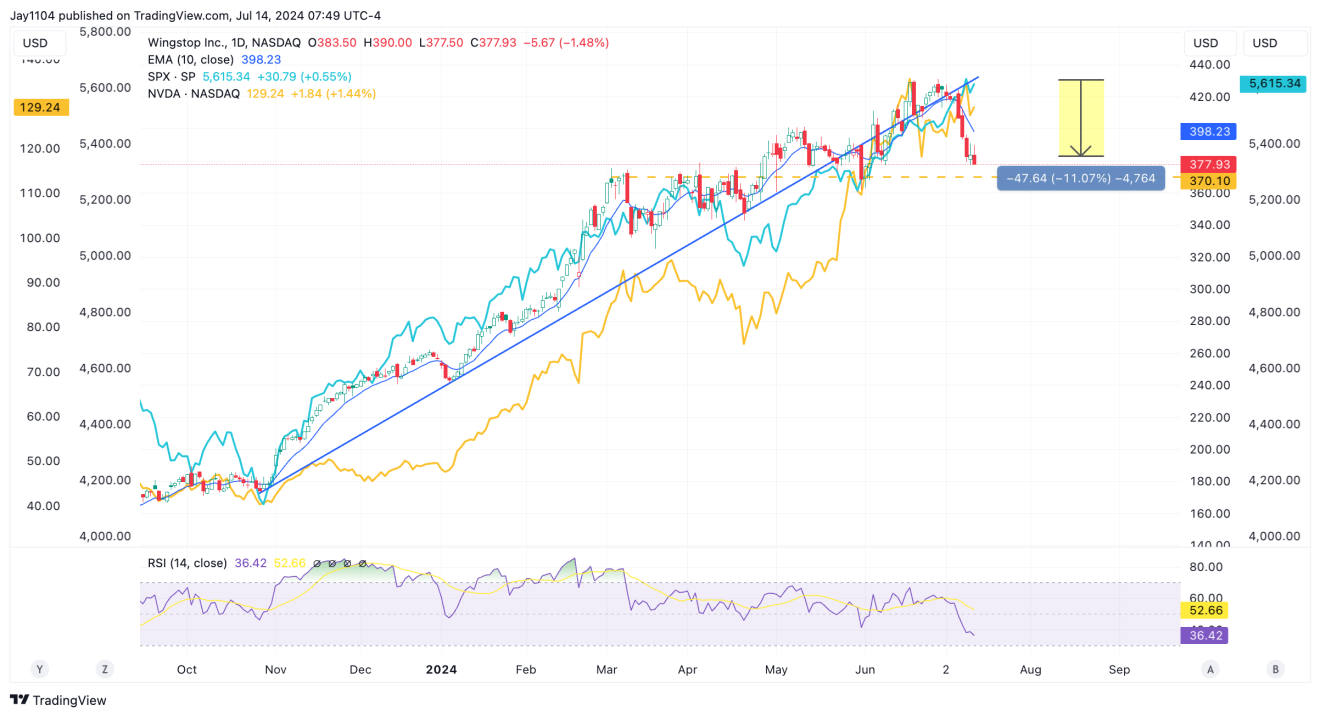This week won’t contain all of the economic data we have seen the past couple of weeks, but there will be a Q&A session between Jay Powell and David Rubenstein on Monday, July 15, at 12:30 PM ET. I’m not sure that Powell will have all that much new to say following his commentary last week.
The data from the report came in lower than expected, but then the data came in hotter than expected. The message from the Fed has been consistent that they want to gain greater confidence, and I don’t think two months of better inflation data, aided by falling gasoline prices, are enough following four hot prints.
are expected to fall by -0.2% m/m on Tuesday. These numbers will be important, especially following the weak CPI data. Remember, retail sales are reported in nominal terms. We will get a GDPNow update on Tuesday following the data.
The Bloomberg economic surprise index has collapsed recently, and I will say that it isn’t very often that you see the and this index travel in opposite directions. Historically, peaks in the surprise index typically accompany peaks in the S&P 500 index. It would suggest that the S&P 500 is not trading with the macro data.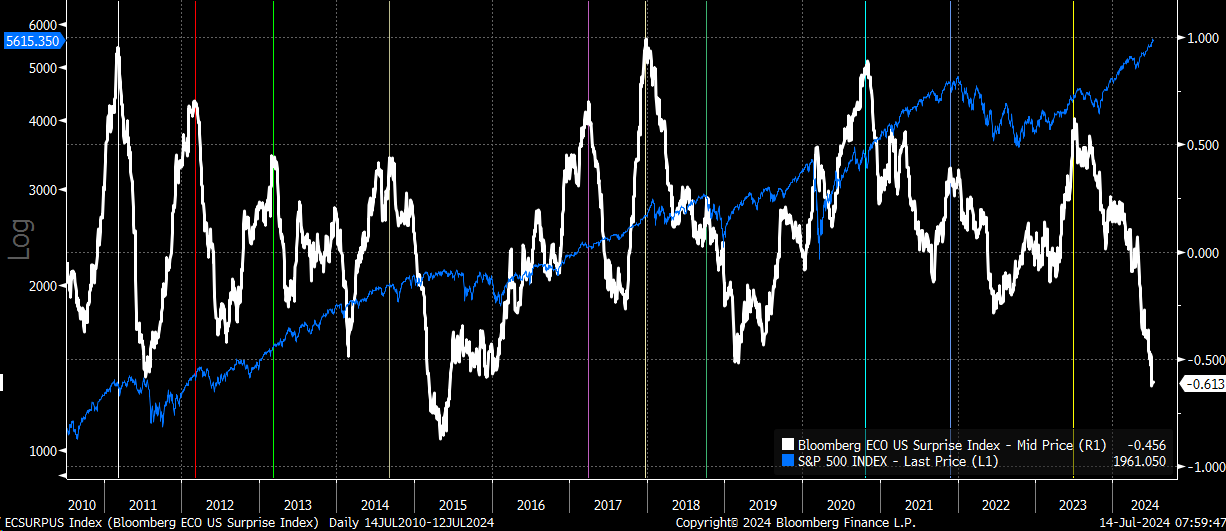
Turning to Friday’s rally and afternoon sell-off, a large $4 billion-plus market on close SELL imbalance weighed. I think the main message is that when the sellers show up, this market is not nearly as strong as it would appear to be. Volume on the ETF has been very light recently and, for the most part, below the 20-day moving average. But at least on Thursday and Friday, those volumes did pick up.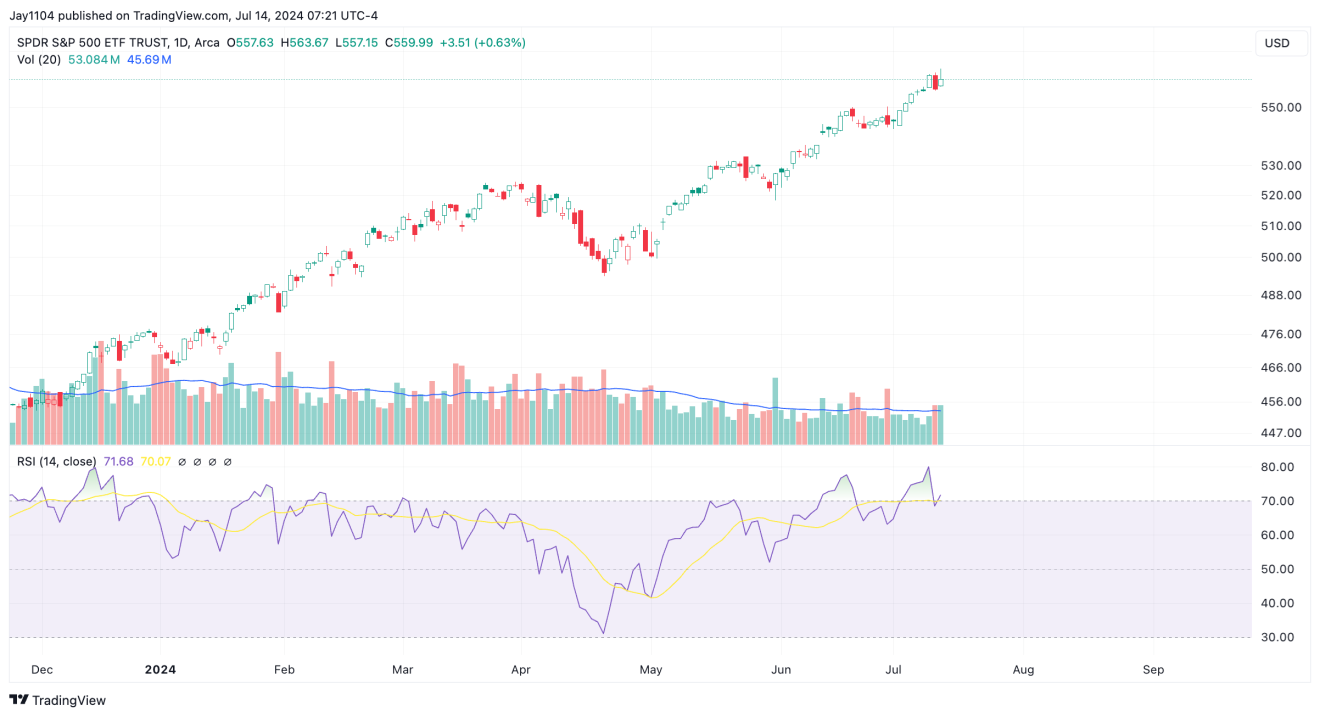
The volume will likely pick up further this week, with a OPEX on Wednesday. On Thursday, the ETF will buy to cover that NASDAQ July 19, 19,750 call option, which could create buying pressure as it is repurchased; then, on Friday, the QYLD ETF will sell a new at the money NDX covered call for August OPEX, creating potential selling pressure. Plus, the Monthly OPEX this Friday, in general, will bring higher volumes.
S&P 500: Reversal Pattern Still Holds
This past Friday, after falling all day, the market reversed in the final hour, creating another 2b top pattern on the SPX. Again, these patterns can be reversal patterns and form when trying to make a new high, failing, and closing below the prior high close. The pattern would be invalidated with a close above 5,635.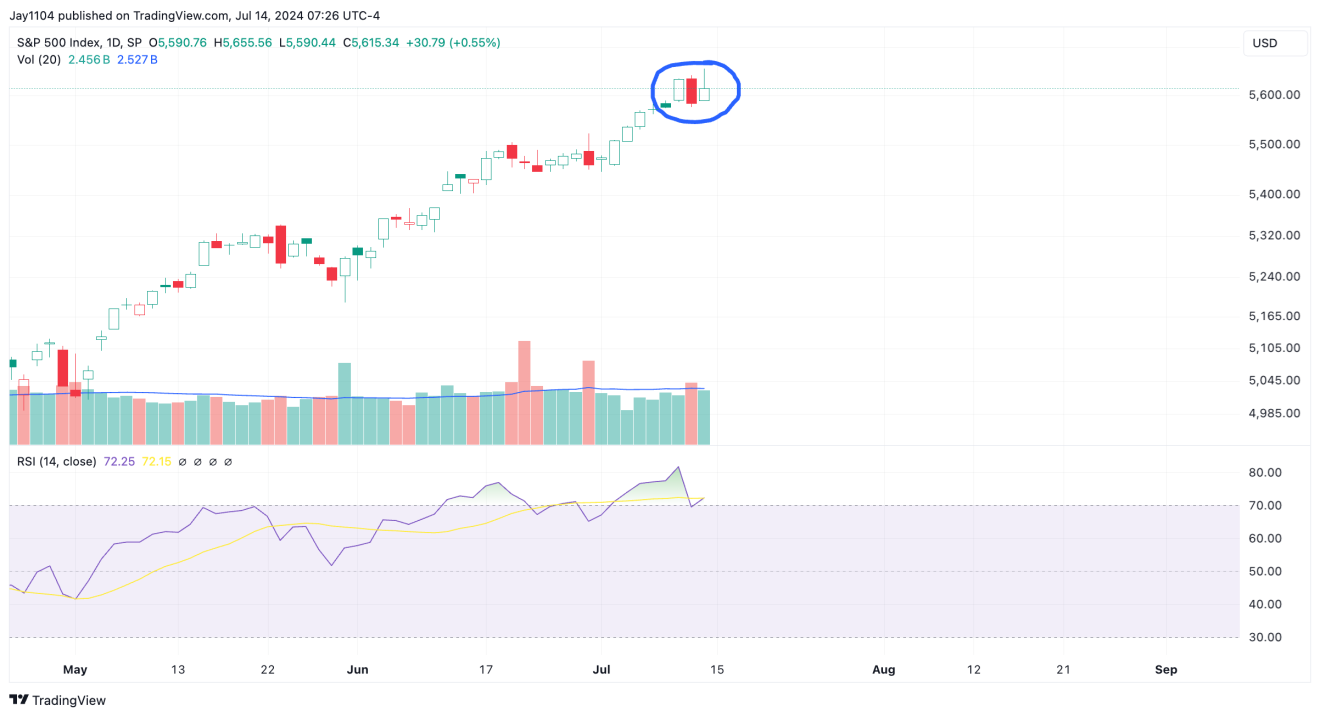
The S&P 500 is still in the rising wedge pattern noted a few times previously and is still sitting at the 78% extension, so this remains a candidate for a topping pattern in the market. The 2b top mentioned above strengthens that case.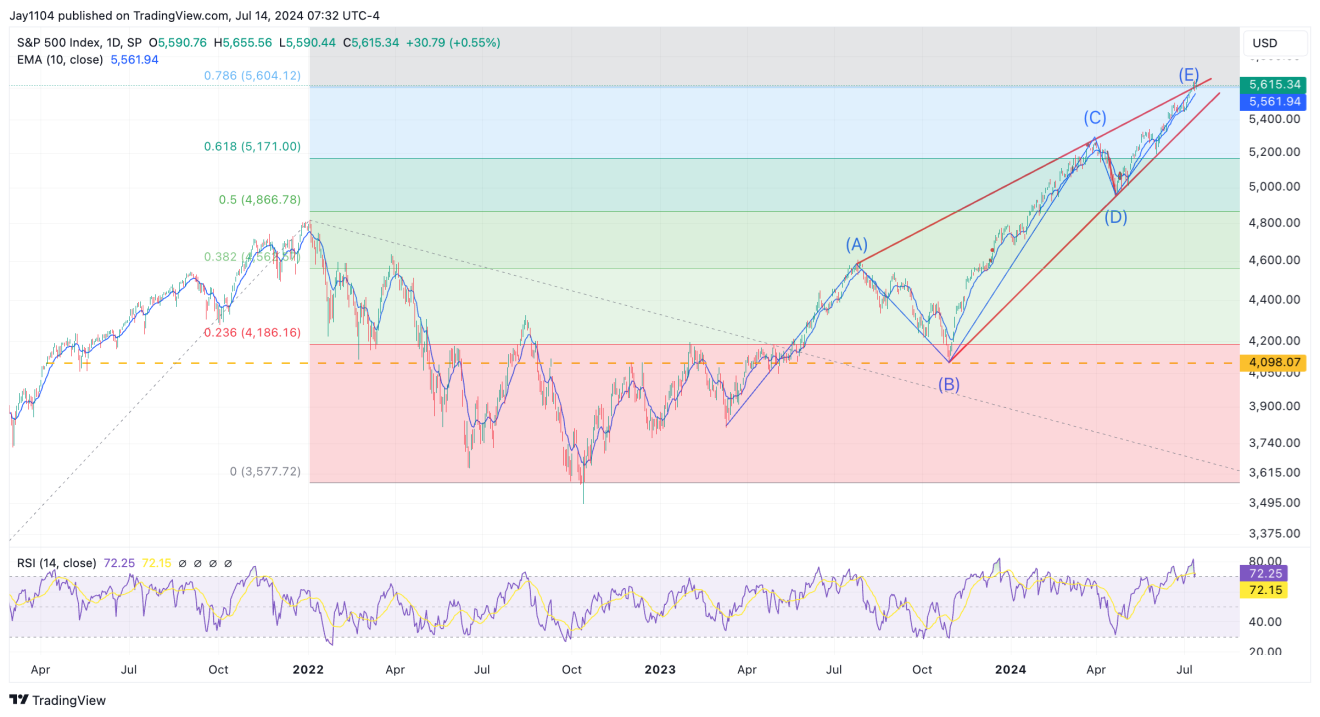
NASDAQ 100 – Same Pattern Holds
The same pattern on the occurred on the weekly chart, which could carry more weight because we won’t know if this pattern is invalidated until the end of next week.
Semiconductor ETF to Hold Support?
The also remains in the ascending broadening wedge pattern and is again very close to breaking the trend line holding the pattern together. The 10-day exponential moving average is serving as that support level for now. A breach of the 10-day EMA will confirm the broadening wedge pattern breaking and could indicate a potential loss of momentum in the sector.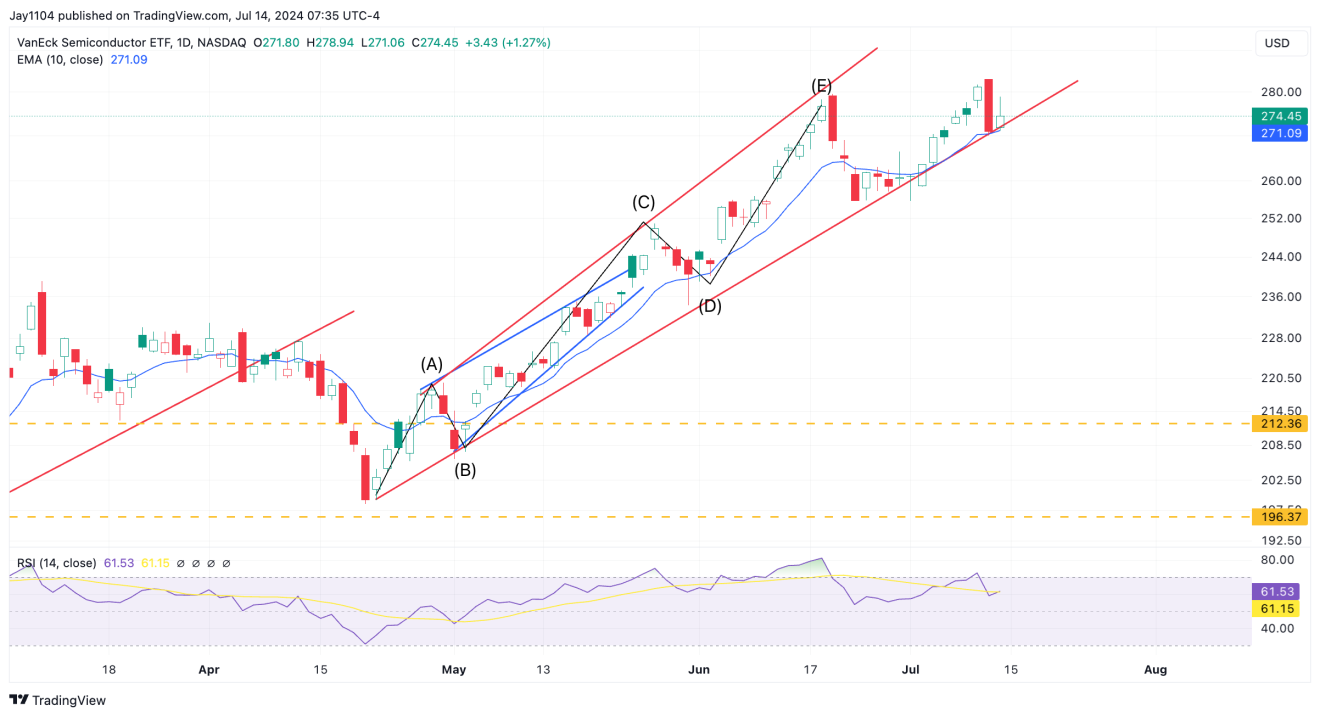
The 10-day exponential moving average is also essential for Nvidia (NASDAQ:), and it, too, is supporting the stock at the moment. In addition, the stock has created two bearish engulfing patterns in recent days; the last time was back in March, followed by a 20% decline. The stock, this time, needs to break support around $118 to indicate that something more serious is coming.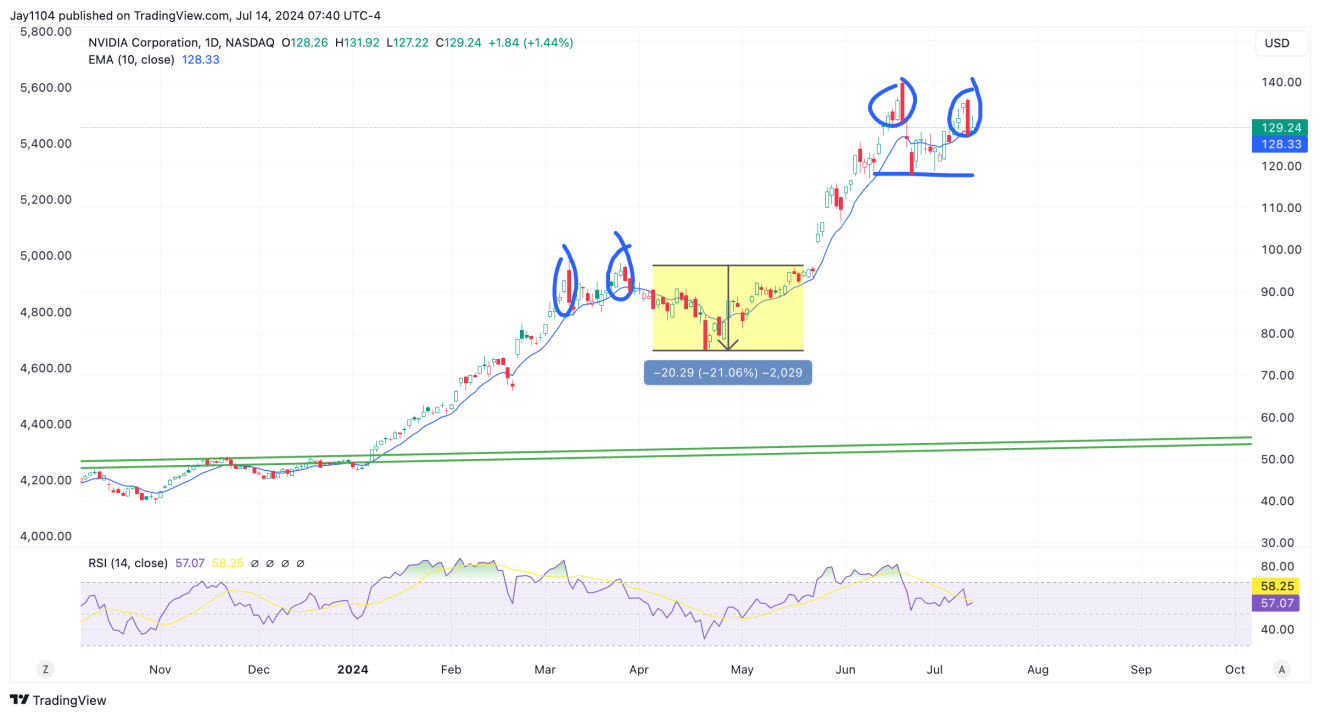
Meanwhile, Wingstop (NASDAQ:) continues to struggle, and this stock is more of a risk gauge than anything at this point. It has been a market leader but has really struggled of late, falling by 11%. The key level to watch here comes at $370, as that was a support/resistance zone going back to March. If the stock continues to break down, it likely serves as a leading indicator of what is to come for the broader market.